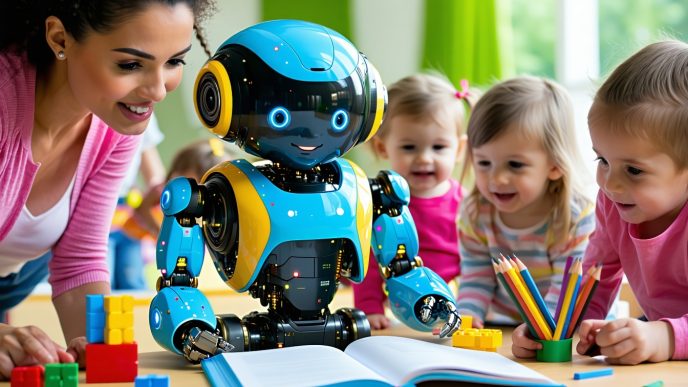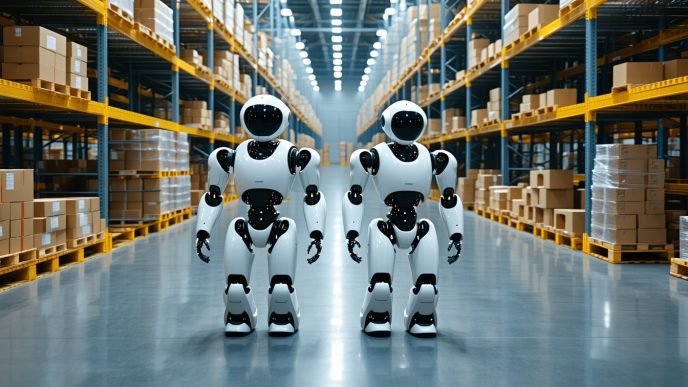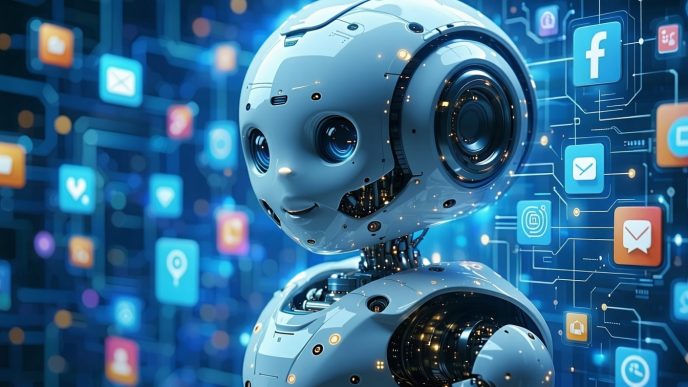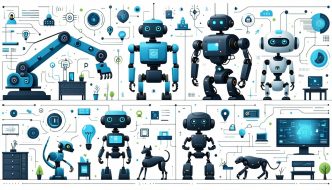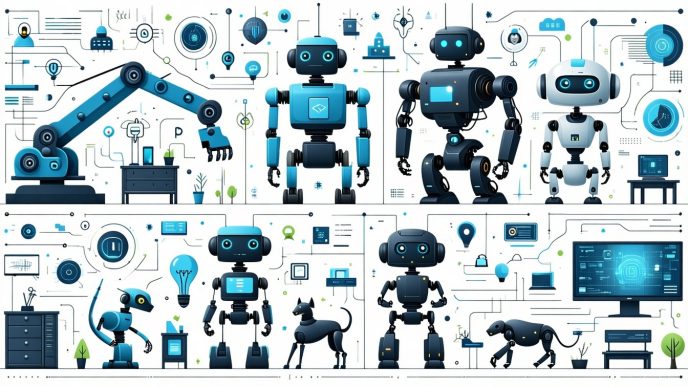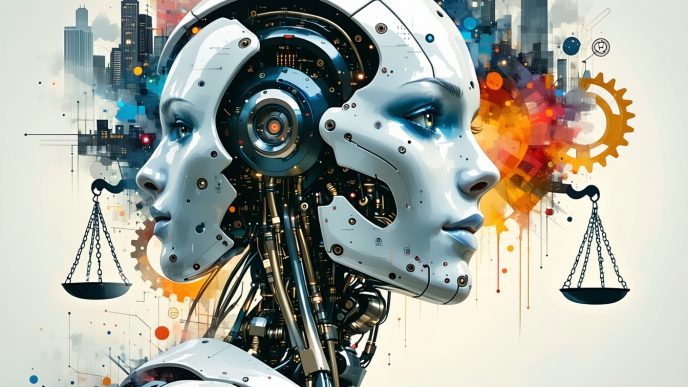The Rise of Humanoid Robots
Introduction to Humanoid Robots
Humanoid robots are designed to resemble human appearance and behavior, making them capable of performing various tasks that involve interaction with people. These robots encompass features such as advanced mobility, gesture recognition, and sometimes even emotional responses. As technology progresses, humanoids have gained prominence not just for their physical capabilities, but also for their potential to integrate into various sectors of society.
The rise of humanoid robots coincides with rapid advancements in artificial intelligence (AI), machine learning, and robotics engineering. As a result, they are becoming increasingly adept at handling complex tasks, which places them in a position to assist humans in diverse environments. Understanding the underlying technology can shed light on how humanoid robots may enhance work and life. For more insight into this technology, see our articles on neuralink and humanoid integration and ai models in humanoid robots.
Applications of Humanoid Robots
The applications of humanoid robots are varied and continue to expand as their capabilities improve. These robots can be utilized in fields such as healthcare, education, customer service, and even for daily chores. Here are some prominent applications:
| Industry | Application |
|---|---|
| Healthcare | Assisting with patient care, monitoring health conditions, and providing companionship. Explore more about this in our article on humanoid robots in healthcare. |
| Education | Acting as teaching assistants or tutors, enhancing learning experiences. For further details, visit humanoid robots for education. |
| Customer Service | Engaging with customers, handling inquiries, and providing assistance. See more in our article on humanoid robots vs ai assistants. |
| Home Use | Performing household tasks, such as cleaning and cooking. Learn about home applications in humanoid robots for home use. |
| Companionship | Offering emotional support and companionship, especially for the elderly. Check out humanoid robots for companionship for more insights. |
These applications highlight the transformative role that humanoid robots can play in society. Their integration into both professional and domestic settings illustrates their versatility and potential for improving human life. The ongoing development in humanoid technology promises even more innovative usages in the future, continuing to redefine how humans and robots interact.
The Potential for Remote Work
Humanoid robots are emerging as potential tools in the evolving landscape of remote work. As organizations adapt to a more flexible work environment, these robots can play a significant role.
Remote Work Trends
The trend towards remote work has gained traction over recent years. Many companies have adopted flexible work arrangements, allowing employees to work from home or other locations. A survey conducted in 2023 highlighted key statistics related to remote work trends:
| Trend | Percentage (%) |
|---|---|
| Companies offering remote work | 75 |
| Employees preferring hybrid models | 60 |
| Increase in productivity while working remotely | 55 |
This shift has prompted businesses to seek innovative solutions to enhance collaboration and communication among remote teams.
Role of Humanoid Robots in Remote Work
Humanoid robots can serve multiple functions within remote work settings. They can facilitate virtual meetings, assist with administrative tasks, and enhance team engagement.
-
Virtual Presence: Humanoid robots can act as virtual avatars for team members, offering a physical presence in discussions held in different locations. They can convey non-verbal cues that are often missing in video calls.
-
Administrative Support: These robots can manage scheduling, reminders, and document handling, streamlining workflows and allowing human employees to focus on more critical tasks.
-
Team Interaction: By participating in team-building exercises and meetings, humanoid robots can help maintain a sense of camaraderie, even in a remote work environment.
The integration of humanoid robots into remote work practices represents a significant evolution in workplace dynamics. Their ability to bridge physical gaps could redefine teamwork and productivity. For those interested, further information can be found in our article on humanoid robots and edge computing, highlighting how technology supports the functionality of these robots in various scenarios.
Advantages of Using Humanoid Robots
Humanoid robots offer various advantages that can greatly enhance workplace efficiency and adaptability. Their integration into the workforce can lead to significant changes in productivity, cost management, and work flexibility.
Increased Productivity
Humanoid robots are designed for efficiency. They can work around the clock without the need for breaks or rest, allowing for increased overall productivity in various tasks. Here are some key statistics on how humanoid robots can affect productivity:
| Factor | Increase in Productivity (%) |
|---|---|
| Task Automation | 30-40% |
| Response Time to Queries | 20-25% |
| Multitasking Capability | 15-30% |
The ability of humanoid robots to automate repetitive tasks can free up human workers to focus on more complex and creative aspects of their jobs, as discussed in our article on humanoid robots and remote work.
Cost-Effectiveness
Implementing humanoid robots can be cost-effective over time, despite the initial investment. The reduction in labor costs coupled with increased efficiency creates a favorable financial outlook for businesses. Some of the financial benefits include:
| Cost savings | Description |
|---|---|
| Labor Savings | Reduced workforce salaries by up to 20% |
| Training Costs | Lower training expenses as robots can learn tasks quickly |
| Operational Costs | Decreased utility costs due to energy-efficient design |
Although there are upfront costs associated with humanoid robot customization and maintenance, the long-term savings often outweigh these considerations.
Flexibility in Work Arrangements
Humanoid robots provide flexibility in work environments, allowing businesses to adapt easily to changing demands. They can be utilized in various roles across multiple industries, from healthcare to customer service. The adaptability includes:
| Aspect | Flexibility Offered |
|---|---|
| Work Hours | Operate any time without fatigue |
| Task Variety | Transition smoothly between different tasks |
| Location | Function in diverse environments, including remote settings |
This flexibility makes humanoid robots ideal for businesses needing quick transitions or heightened response to market changes. For example, in remote work scenarios, these robots can be utilized to maintain engagement and productivity, as discussed in our article on humanoid robots in logistics.
Integrating humanoid robots into the workforce is not without challenges, but the advantages of increased productivity, cost savings, and flexibility make them a valuable asset for modern businesses.
Challenges of Implementing Humanoid Robots
While the integration of humanoid robots into various fields presents exciting opportunities, several challenges remain that need careful consideration. These hurdles include technological limitations, security and privacy concerns, and ethical considerations that could affect their deployment and functionality in the workplace.
Technological Limitations
Humanoid robots face significant technological limitations that can affect their performance and capabilities. Despite advancements in robotics, many humanoid robots still struggle with tasks requiring dexterity and precision. Certain functions, like walking, gripping, and interacting with complex environments, are often hindered by current locomotion systems and sensor technology.
The table below outlines some common technological limitations in humanoid robots:
| Limitation | Description |
|---|---|
| Dexterity | Difficulty in performing delicate tasks. |
| Navigation | Challenges in navigating complex or dynamic spaces. |
| Sensor Accuracy | Limitations in sensing the environment effectively. |
| Battery Life | Short operational time before recharging is needed. |
Investments in humanoid robot locomotion systems and enhanced sensor technology are necessary for overcoming these challenges and improving functionality.
Security and Privacy Concerns
The implementation of humanoid robots also raises important security and privacy concerns. As these robots may collect sensitive information through various means, including voice interfaces and sensors, there is a significant risk associated with data breaches and misuse of personal data.
Employers must consider the following security and privacy issues when integrating humanoid robots into the workplace:
| Concern | Description |
|---|---|
| Data Collection | Robots may gather sensitive data that needs protection. |
| Cybersecurity Threats | Risk of hacking and unauthorized access to robot systems. |
| Employee Surveillance | Concerns about robots monitoring employee activities. |
To alleviate these concerns, companies must ensure compliance with relevant regulations regarding humanoid robots and privacy and implement robust cybersecurity measures.
Ethical Considerations
The ethical implications of employing humanoid robots in the workplace are complex and multifaceted. Questions about the impact on employment and the potential for discrimination against workers arise when machines take over tasks traditionally done by humans.
Some key ethical considerations include:
| Ethical Concern | Description |
|---|---|
| Job Displacement | Potential loss of jobs for human workers. |
| Human-Robot Interaction | Ensuring appropriate behavior and communication norms. |
| Accountability | Determining liability in case of accidents or failures. |
Understanding the dynamics of robot emotions and ethics will be crucial for navigating these challenges and ensuring a fair and just integration of humanoid robots into work environments.
Humanoid Robots in Various Industries
Humanoid robots are increasingly being integrated across multiple industries, offering innovative solutions to enhance efficiency and productivity. This section explores the applications of humanoid robots in healthcare, manufacturing, and customer service.
Healthcare
In the healthcare sector, humanoid robots are being utilized to assist medical professionals and improve patient care. They can perform tasks such as delivering medication, providing companionship, and even assisting with rehabilitation exercises. Their ability to interact with patients helps reduce feelings of loneliness and anxiety, particularly in elderly care.
| Application | Benefits |
|---|---|
| Medication Delivery | Reduces human error and ensures timely administration |
| Companion Robots | Provides emotional support and social interaction |
| Rehabilitation | Aids in physical therapy by guiding patients through exercises |
These robots are also used in telemedicine, enabling healthcare professionals to consult with patients remotely. For more on humanoid robots in elder care, see our article on humanoid robots in elder care.
Manufacturing
In manufacturing, humanoid robots are increasingly common on assembly lines. They can perform repetitive tasks, enhancing efficiency while reducing the risk of injury to human workers. These robots can be programmed for various tasks, from assembling components to quality control checks.
| Application | Benefits |
|---|---|
| Assembly Line Work | Increases speed and precision in production |
| Quality Control | Ensures consistent product standards |
| Hazardous Environments | Reduces human exposure to dangerous conditions |
The integration of humanoid robots in manufacturing leads to higher productivity levels and lower operational costs. For insights into other applications, consider reading about humanoid robots for home use in our article on humanoid robots for home use.
Customer Service
Humanoid robots are making their way into customer service roles, providing assistance in various settings, from retail to hospitality. They can greet customers, provide information, and even complete transactions, enhancing the customer experience.
| Application | Benefits |
|---|---|
| Greeting Customers | Creates a welcoming atmosphere |
| Information Kiosks | Provides accurate information quickly |
| Transaction Support | Streamlines payment processes and reduces wait times |
The ability of these robots to interact naturally makes them an asset in environments where human engagement enhances service. For further exploration into humanoid robots in customer service, refer to our related articles on various humanoid robots like the Apptronik Apollo and the Xiaomi CyberOne.
Considerations for Employers
Implementing humanoid robots in the workplace introduces various elements that employers must carefully evaluate. These considerations include training and integration processes as well as legal and regulatory compliance issues.
Training and Integration
Successful integration of humanoid robots into the workforce requires thorough training for both the robots and the human employees. Employers must ensure that staff are familiar with the robot’s capabilities and functionalities. Training programs should cover topics such as operational protocols, safety measures, and troubleshooting procedures.
Here is a sample outline of training components for employees:
| Training Component | Description |
|---|---|
| Functional Overview | Introduction to the robot’s capabilities and features. |
| Safety Protocols | Standard operating procedures for safe interaction with the robot. |
| Maintenance Training | Basic care and troubleshooting steps for keeping the robot operational. |
| Emergency Procedures | Response actions in case of malfunctions or accidents involving the robot. |
Employers should also develop a system for monitoring the robot’s performance and its impact on workflow. Continuous assessment will help in making necessary adjustments to maximize efficiency and productivity.
Legal and Regulatory Compliance
Employers face legal and regulatory challenges when incorporating humanoid robots into their operations. It is essential to comply with existing labor laws, safety regulations, and data protection policies. This includes understanding how humanoid robots fit into current employment classifications, especially if tasks they perform overlap with those traditionally done by human workers.
The following table outlines key legal considerations:
| Legal Issue | Description |
|---|---|
| Labor Classification | Determining the employment status of robots and their human operators. |
| Safety Regulations | Adhering to workplace safety standards to protect both robots and employees. |
| Data Privacy | Ensuring compliance with data protection laws related to any information handled by robots. |
| Intellectual Property Rights | Addressing ownership rights for any innovations or creations made by robots. |
To navigate these complexities, it is advisable for employers to consult legal experts who specialize in robotics and labor law. By focusing on training and compliance, organizations can effectively implement humanoid robots and enhance productivity in the workplace while minimizing risks.




